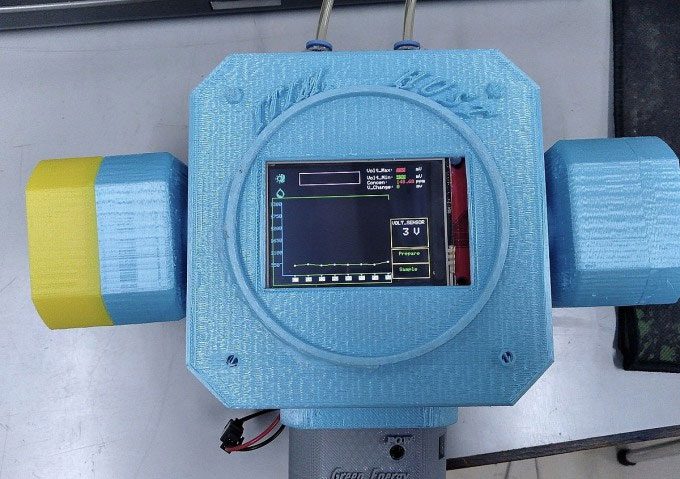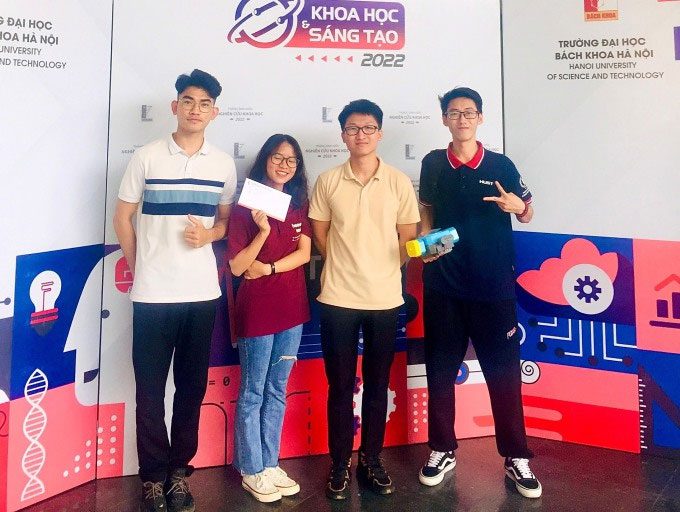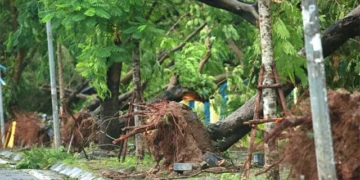A device developed by a group of students from the Institute of Engineering Physics at Hanoi University of Science and Technology can detect toxic gases like NH3 and H2S present in the environment.
Since 2021, Đỗ Văn Minh, a student from the K63 class at the Institute of Engineering Physics, has initiated the design and construction of a device to measure toxic gases in the environment. Under the guidance of instructors, Minh, along with Trương Hồng Cường, Nguyễn Thị Mai Anh, and Nguyễn Ngọc Minh, has further developed this idea.
After two years of research, the toxic gas measurement device has undergone three upgrades, comprising three main components: a casing, an electronic control circuit, and a measurement chamber.
Minh noted that various toxic gases, such as NOx, NH3, H2S, and COx, frequently appear in industrial environments, with NOx, H2S, and NH3 directly affecting human health. The permissible concentration of these gases in the workplace is below 50 ppm. The device developed by the group can detect toxic gases at low levels (10 ppm concentration) and will issue a warning.

The gas concentration measurement device created by the student group features a display showing the concentration value. (Photo: NVCC)
An essential and challenging point was researching a sensor that could operate like a switch, allowing for the opening and closing of the circuit as in electrical circuits. In this application, toxic gases act as an external influence that allows the switch to operate by changing resistance. The team chose V2O5 as the material for the gas sensor application. At room temperature, V2O5 can respond solely to ammonia (NH3), while it shows almost no change for other toxic gases like H2S, CO, CO2, and NO2, indicating that the sensor is highly selective within a gas concentration limit of 500 ppm as researched by the group.
Minh indicated that practical tests have demonstrated that the device can detect the presence of toxic gases in the environment and issue alerts. When the gas concentration exceeds the standard threshold of 50 ppm, the device will emit a warning signal. In addition to alerts, the device is integrated with a screen that displays the concentration value of the gas being measured and graphs the signal changes in concentration.
Currently, there are many types of toxic gas measurement products on the market imported from China, Germany, and Japan, priced from several million to hundreds of millions of Vietnamese Dong. While some products have been developed in Vietnam, most of the gas sensors (sensor chips) must be imported from abroad.

The student group receiving the National Student Research Award 2022. (Photo: NVCC).
Professor Nguyễn Đức Hòa, Deputy Director of the International Training Institute for Materials Science (ITIMS) at Hanoi University of Science and Technology, who guided the students, evaluated that this is a research product from the students, spanning material fabrication, sensor chip development, measuring circuits, and data display. The product is still at the experimental stage, but “the highlight is that the group has successfully fabricated a sensor chip with outstanding features such as low power consumption, high responsiveness, and the ability to detect toxic gases at low concentrations,” said Professor Hòa. He suggested that the product needs improvements in design and certain operational features to be suitable and convenient for daily use.
The group’s research recently won the second prize at the National Student Research Competition 2022.


















































